Sarah transformed her cluttered bedroom into a peaceful sanctuary by incorporating strategically placed plants, starting with a simple peace lily on her nightstand. You’ll discover how to recreate this calming effect through nine distinct plant decoration approaches that maximize both space and serenity. From vertical gardens that save floor space to minimalist styling techniques that prevent visual overwhelm, these ideas will help you design your own tranquil botanical retreat.

Contents
- 1 Floating Shelves With Cascading Plants
- 2 Nightstand Plant Companions
- 3 Vertical Garden Wall Displays
- 4 Statement Corner Plants
- 5 Window Sill Plant Arrangements
- 6 Bedroom Plant Clusters and Groupings
- 7 Hanging Plant Baskets and Macramé
- 8 Minimalist Plant Styling Solutions
- 9 Plant-Inspired Color Schemes and Accents
Floating Shelves With Cascading Plants
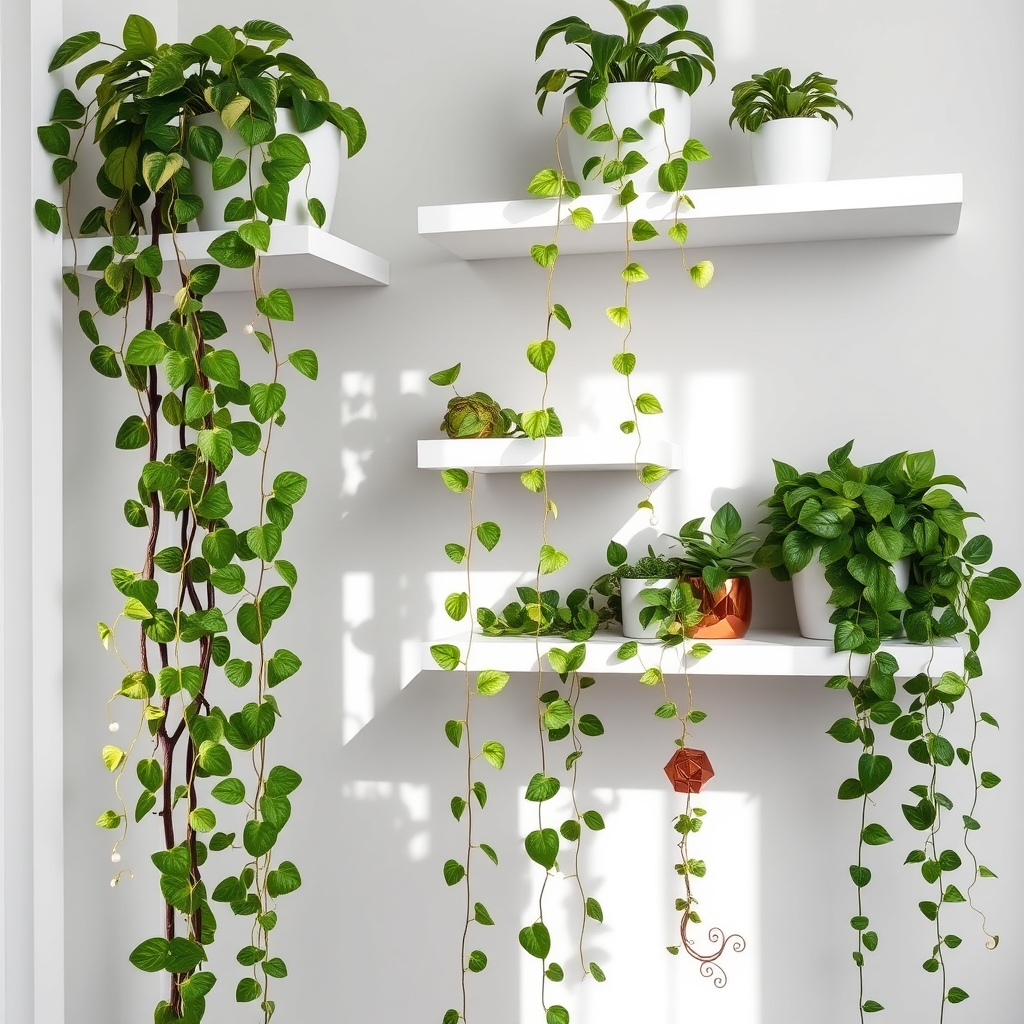
Floating shelves with cascading plants create a striking vertical garden effect by combining minimalist wall-mounted shelving with trailing plants that spill over the edges.
These shelves appear to “float” on the wall without visible brackets, providing a clean, modern look while displaying cascading varieties like pothos, string of pearls, or ivy.
The flowing greenery softens the geometric lines of the shelves, creating natural layers and dimension.
Multiple shelves can be arranged at different heights to maximize visual impact and allow plants to cascade at varying lengths, transforming a plain wall into a living tapestry of foliage.
Nightstand Plant Companions
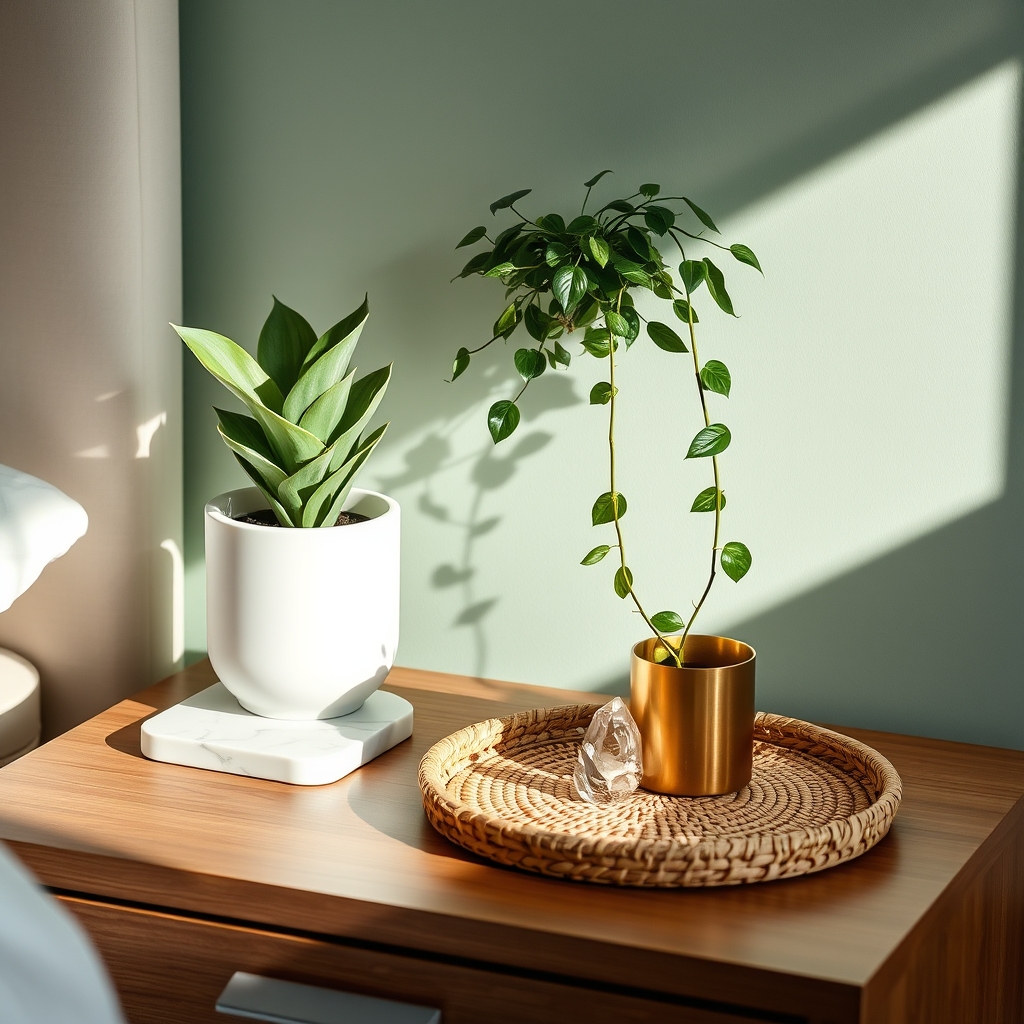
Nightstand Plant Companions encompass compact, low-maintenance plants specifically suited for bedside tables. These plants typically stand 6-12 inches tall and feature smaller footprints to avoid overwhelming limited nightstand space.
Popular choices include peace lilies, snake plants, and small succulents, which thrive in indoor conditions and don’t require frequent watering.
A key characteristic of these plants is their ability to maintain healthy growth in lower light conditions common to bedrooms. Many varieties offer air-purifying benefits while creating a calming atmosphere conducive to sleep.
To protect furniture, these plants are usually displayed in decorative containers with proper drainage saucers, coordinating with bedroom decor through metallic, ceramic, or natural material planters.
The arrangement often incorporates complementary items like small crystals, books, or candles to create a cohesive bedside vignette. Some nightstand companions may include trailing varieties that softly cascade over the edge, adding visual interest without consuming additional surface area.
Vertical Garden Wall Displays
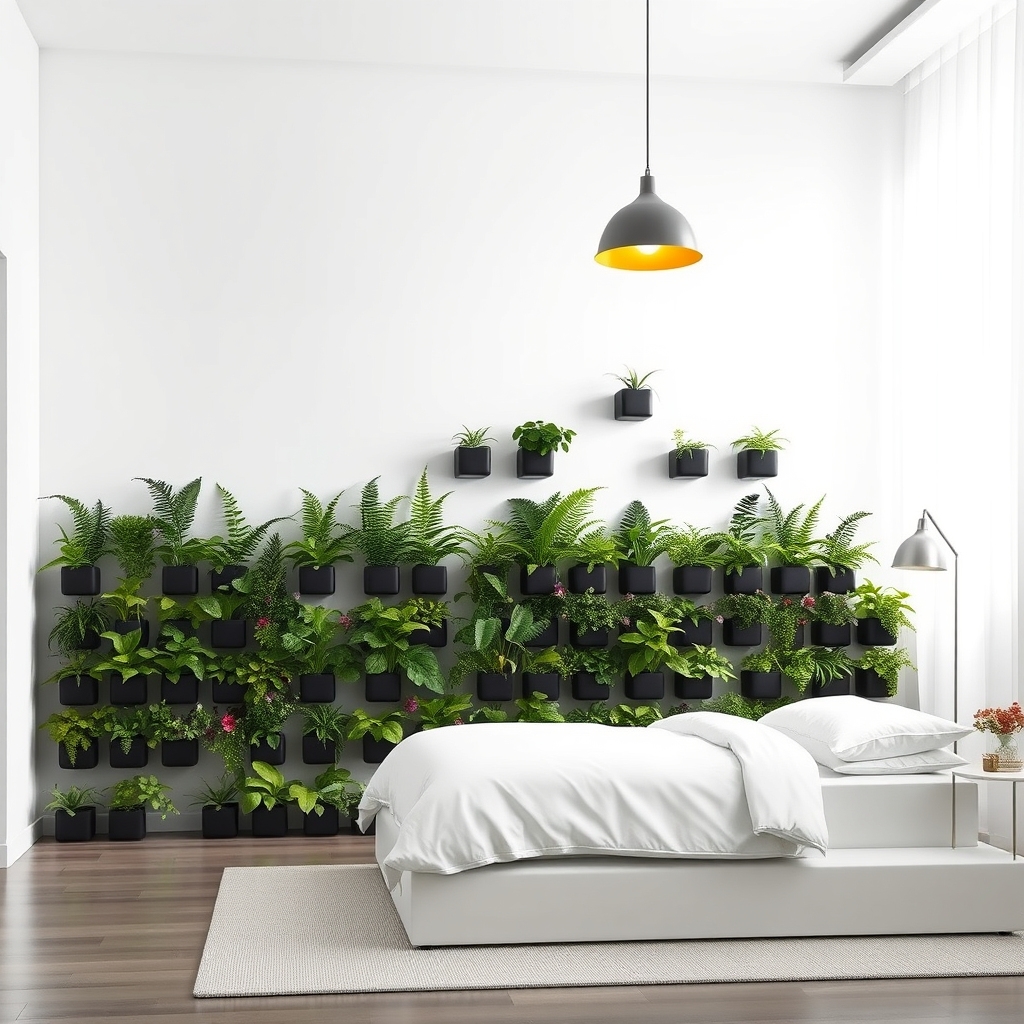
Vertical garden wall displays transform bedroom walls into living tapestries by arranging plants in upward-growing configurations.
These displays feature multiple levels of greenery mounted directly on walls using specialized planters, pocket systems, or modular panels. Plants cascade downward or grow upward, creating dimensional layers of foliage that serve as natural artwork.
The setup typically incorporates various plant species with different textures, sizes, and colors, arranged in patterns or freestyle designs.
This space-saving solution maximizes floor space while adding lush greenery, improved air quality, and a serene outdoor element to the bedroom environment.
Statement Corner Plants
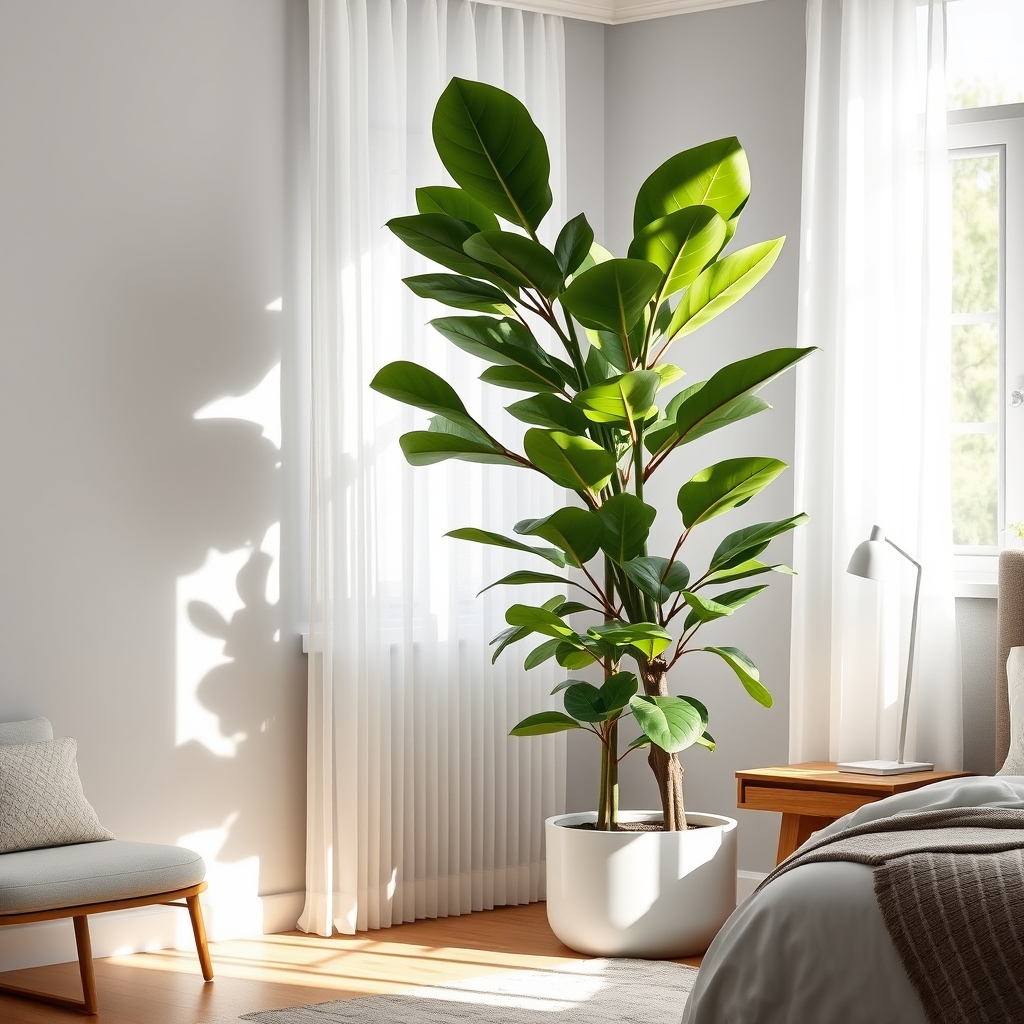
Statement corner plants are large, eye-catching specimens positioned in bedroom corners to create dramatic visual impact.
These plants typically feature substantial height (4-8 feet tall) with bold foliage patterns or striking architectural forms. Popular choices include Fiddle Leaf Fig, Bird of Paradise, or Monstera Deliciosa, which command attention through their towering presence and distinctive leaf shapes.
The plants are often displayed in decorative floor planters or elevated stands, maximizing their dramatic effect while efficiently utilizing corner spaces that might otherwise go unused.
These botanical focal points serve as natural room anchors, drawing the eye upward and adding vertical interest to the bedroom’s design.
Window Sill Plant Arrangements

Window sill plant arrangements transform ordinary windowsills into vibrant display areas using strategically placed potted plants.
Small succulents, trailing vines, and compact flowering plants are arranged in varying heights and textures to create visual interest. Plants are typically positioned in decorative containers, ranging from ceramic pots to vintage vessels, aligned to maximize natural light exposure.
The arrangement may incorporate plant stands, risers, or tiered displays to add depth and dimension. Popular choices include peace lilies, pothos, spider plants, and cacti, selected based on the window’s light conditions and available space.
This setup not only beautifies the window area but also takes advantage of prime growing conditions while keeping plants easily accessible for maintenance.
Bedroom Plant Clusters and Groupings
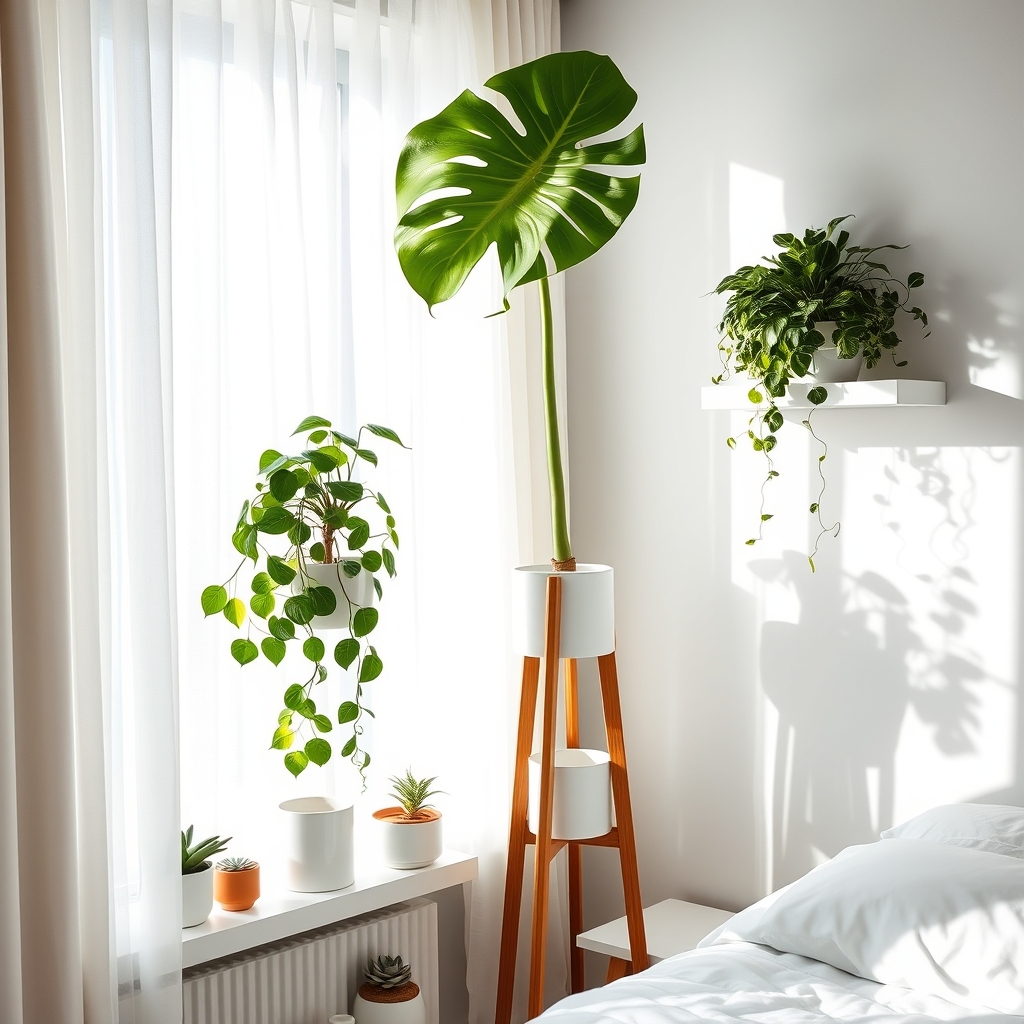
Bedroom plant clusters and groupings involve arranging multiple plants of varying heights, textures, and sizes together to create visually striking displays in the bedroom space.
These arrangements typically feature a mix of 3-5 plants positioned at different levels using plant stands, shelves, or naturally varying plant heights.
Plants are grouped based on complementary characteristics, such as pairing trailing pothos with upright snake plants or combining ferns with compact succulents.
The clusters can be placed in bedroom corners, on bedside tables, or window sills, creating focal points that add depth and natural dimension to the room.
Effective groupings often follow the “thriller, filler, spiller” principle, where taller statement plants are combined with medium-sized leafy plants and cascading varieties for a balanced, layered appearance.
Hanging Plant Baskets and Macramé
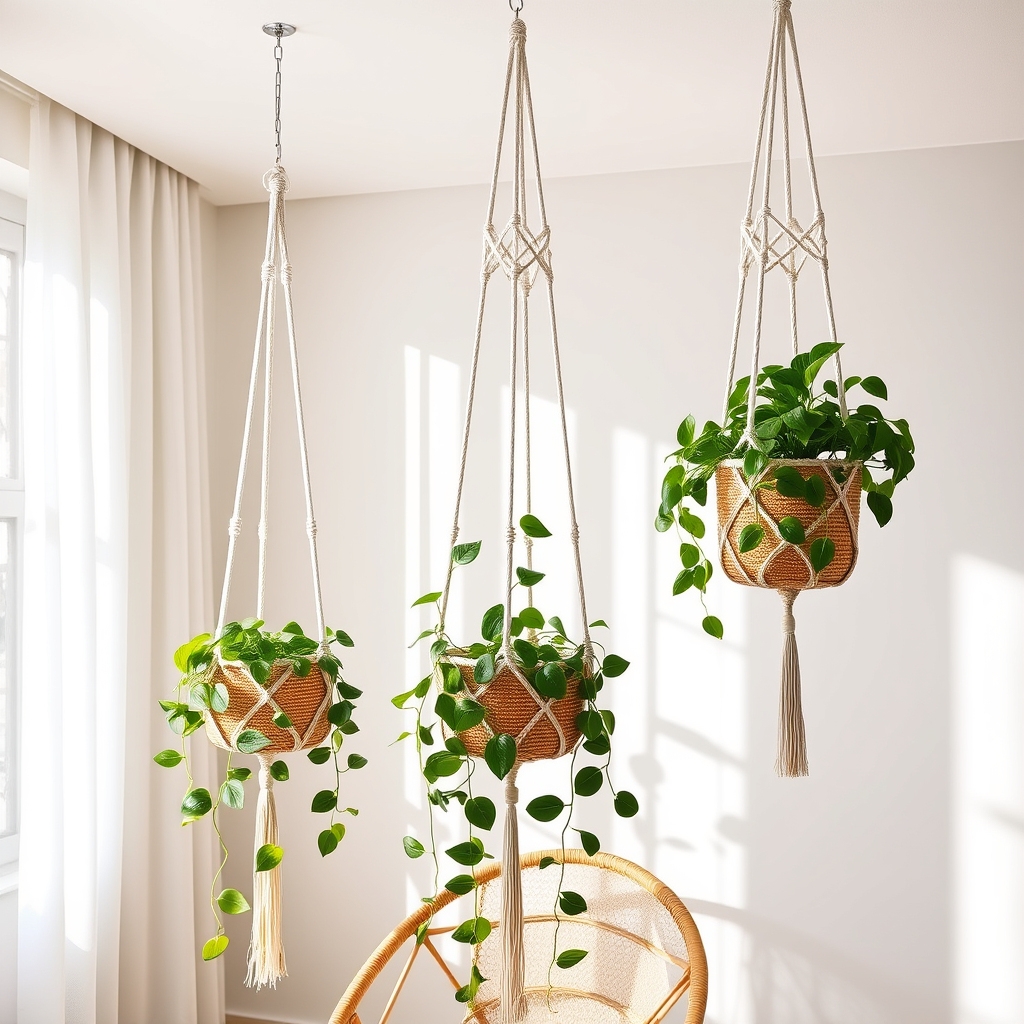
Hanging plant baskets and macramé combine functionality with decorative appeal in bedroom spaces. These suspended planters dangle from ceiling hooks or wall brackets, creating visual interest at varying heights.
Macramé plant holders feature intricate knotted patterns made from natural cotton or jute cord, often displaying geometric designs and tassels. The baskets themselves come in materials like woven wicker, metal wire, or ceramic, supporting trailing plants such as pothos, spider plants, or string of pearls.
This vertical gardening solution saves valuable floor space while adding a bohemian or tropical aesthetic to the bedroom environment.
Minimalist Plant Styling Solutions
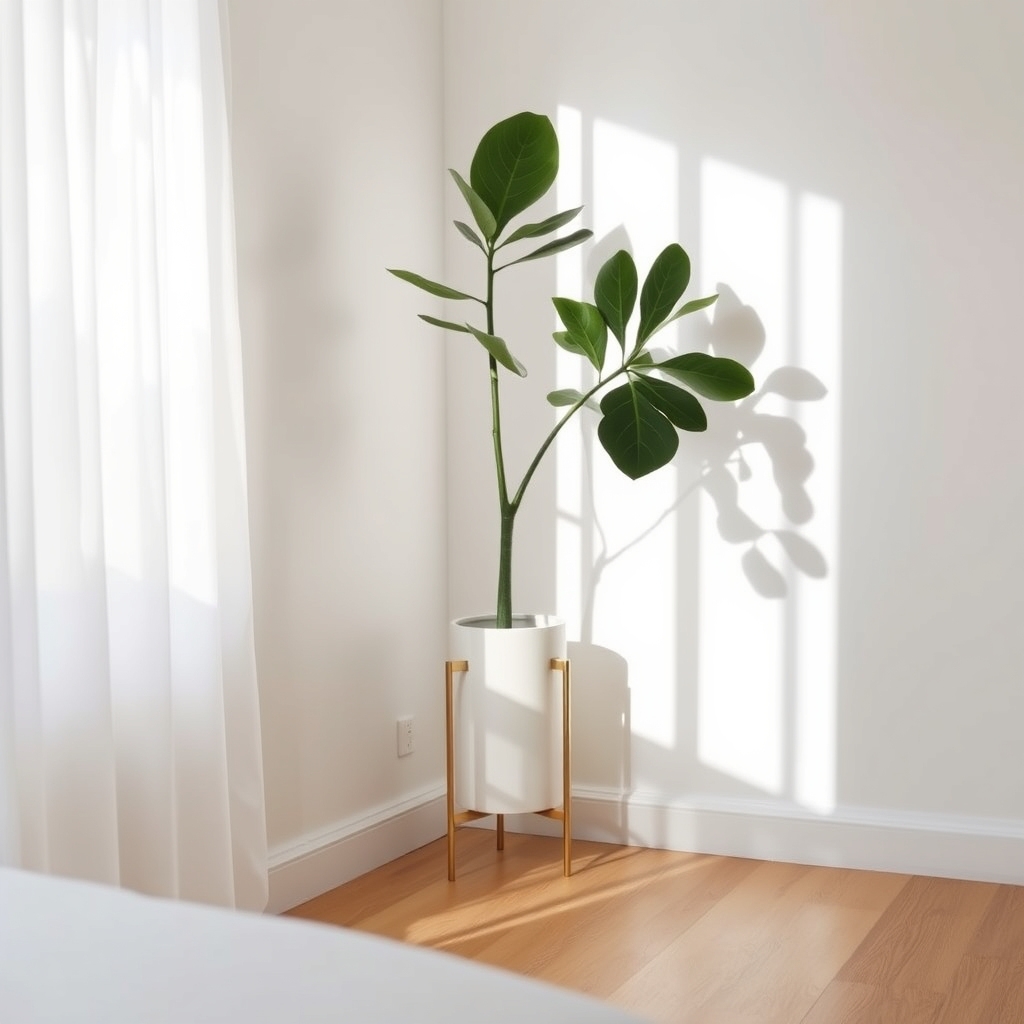
Minimalist plant styling solutions focus on clean lines, purposeful placement, and carefully selected greenery that creates impact without clutter. This approach typically features single statement plants in sleek containers, monochromatic color schemes, and ample negative space.
Key characteristics include:
- Simple ceramic or concrete planters in neutral tones
- One focal plant per surface or corner
- Geometric plant stands with clean metallic finishes
- Limited variety of plant species
- Strategic placement against plain walls or near windows
- Emphasis on form and structure rather than abundance
- Low-maintenance plants with strong architectural shapes
- Natural materials like wood and stone for plant displays
- Uncluttered surfaces with breathing room between elements
- Height variation through minimal tiered arrangements
This styling method embraces the “less is more” philosophy while maintaining visual interest through thoughtful composition and plant selection.
Plant-Inspired Color Schemes and Accents
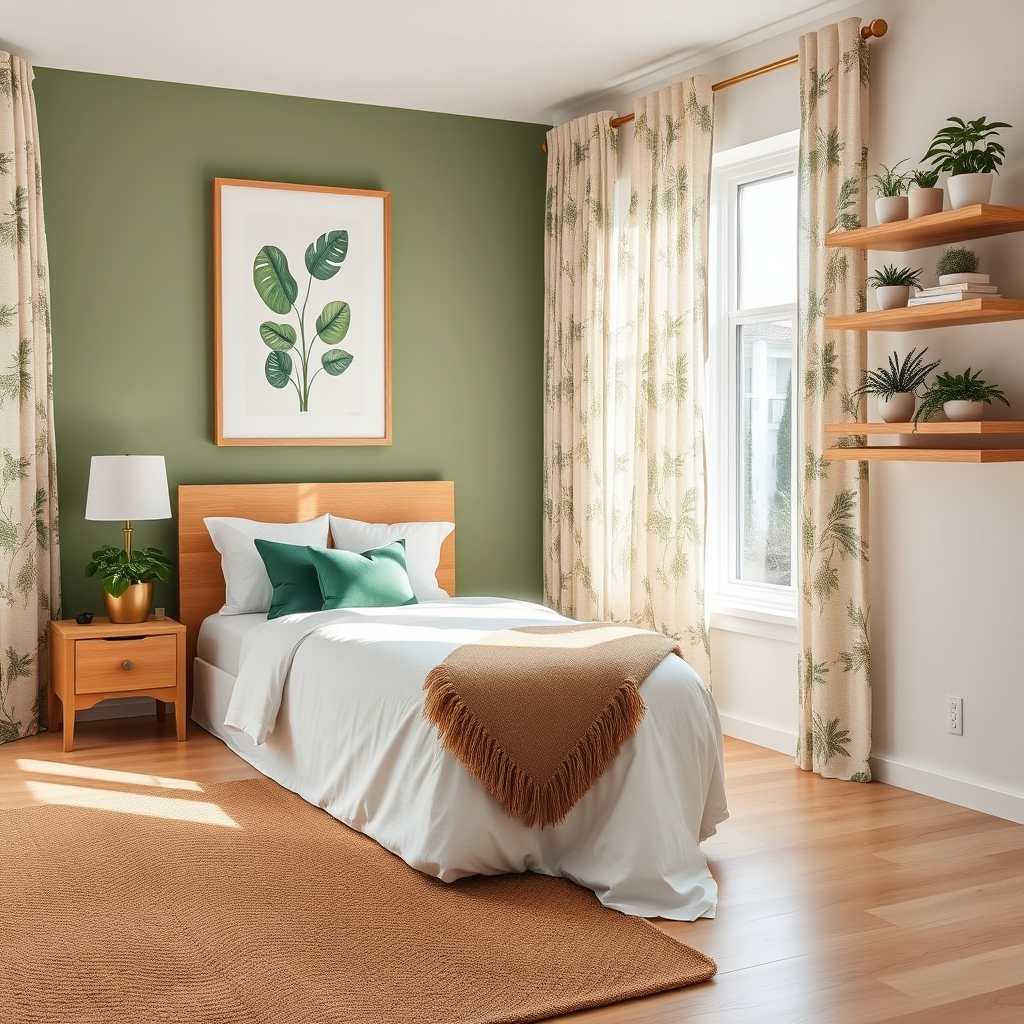
Plant-inspired color schemes and accents draw from nature’s palette to create a harmonious bedroom environment. The design approach incorporates various shades of green as the primary color, complemented by earth tones, botanical prints, and nature-inspired textures.
Key elements include sage green accent walls, forest-themed wallpaper, leaf-patterned textiles, and natural wood finishes. Decorative items such as pressed leaf artwork, botanical throw pillows, and vine-inspired wall decals enhance the theme.
The color scheme typically features combinations like emerald with cream, olive with white, or mint with warm browns. These nature-based design elements create a peaceful, organic atmosphere that connects the indoor space with the natural world while complementing live plants in the bedroom.
